
The Pegnitz River is the city river of Nuremberg and flows through the entire city.
The most famous part of the Pegnitz River flows in the historical center of Nuremberg and divides the old town into two halves of almost the same size: the northern Zebalderstadt and the southern Lorenzstadt.
Embankments run along the river in the old town, historical buildings are located, and the river itself is crossed by bridges that have been part of the urban landscape since the Middle Ages. At first, these were simple wooden bridges and pedestrian bridges, which, including due to frequent destruction due to floods, were replaced by massive stone bridges in the 15th century.
There are two river islands on the river in the old town of Nuremberg: Insel Schütt Island and Flea Market Island (Flea Island, Trödelmarkt), which is also known as Love Island (Liebesinsel).
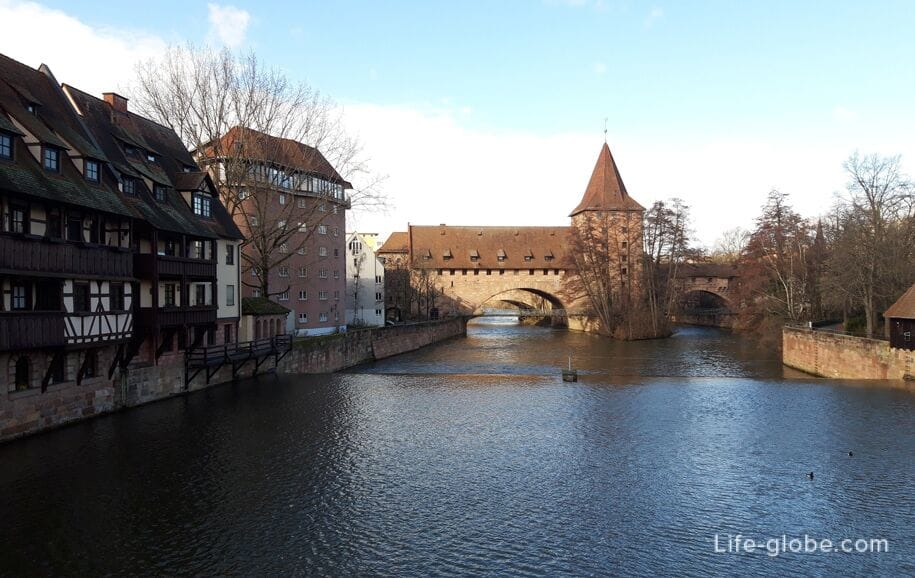
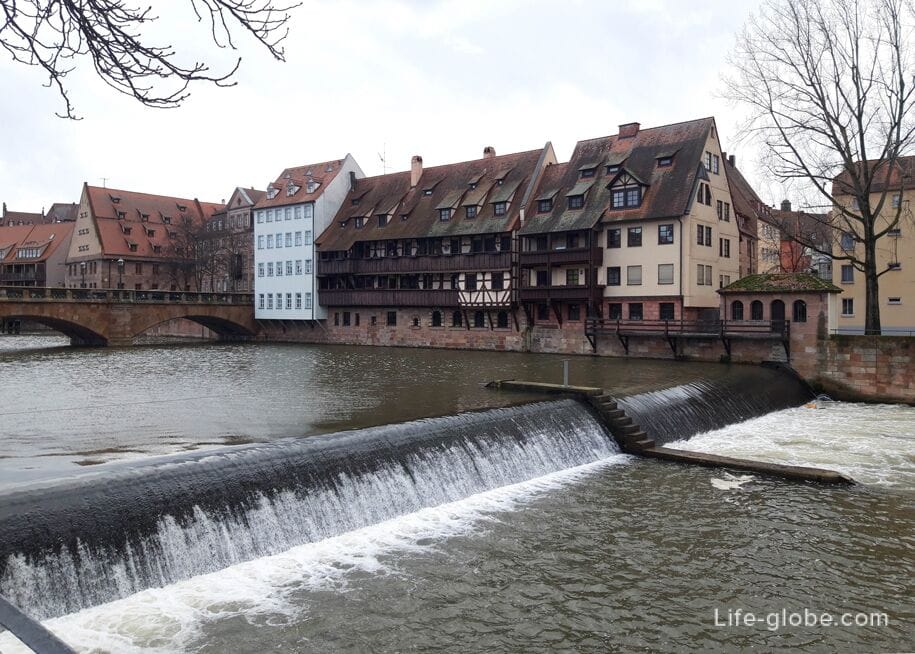


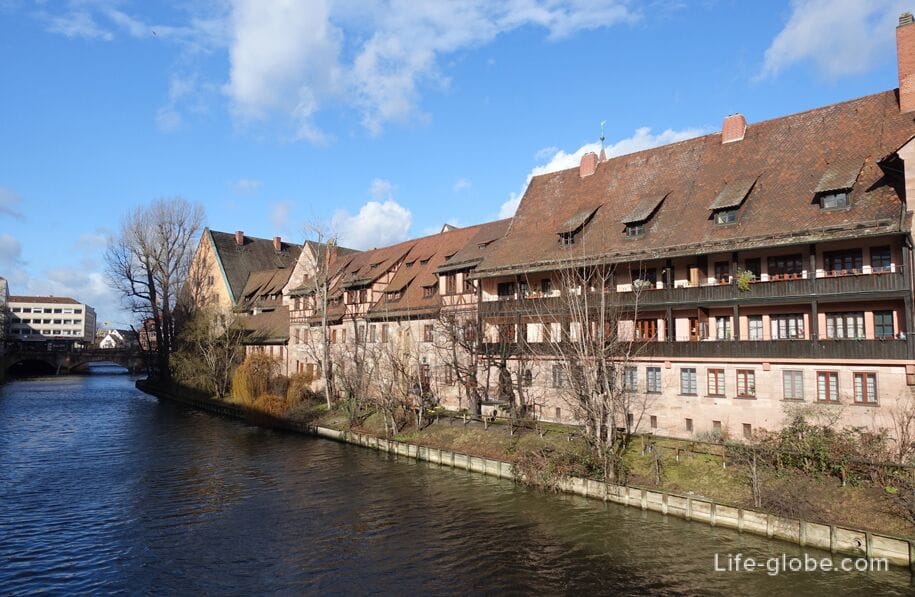
On the east and west sides of the old town, bridges over the Pegnitz run along the former city walls.
On the east side of the old town is the Steuben Bridge (Steubenbrücke), which connects both branches of Pegnitz and the island of Schütt in its eastern part.
The bridge is located opposite the eastern side of the outer city wall. The first bridge on this site was built in 1847.
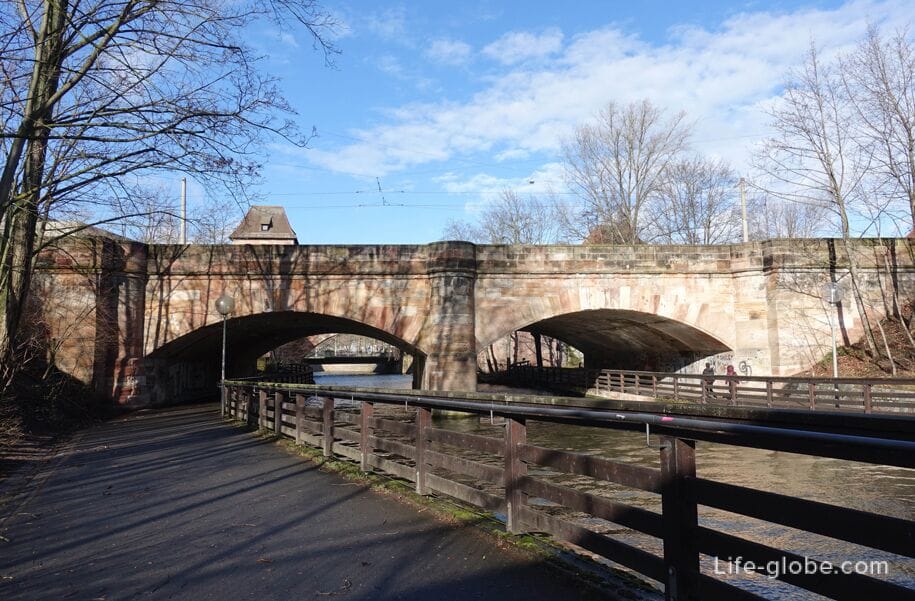
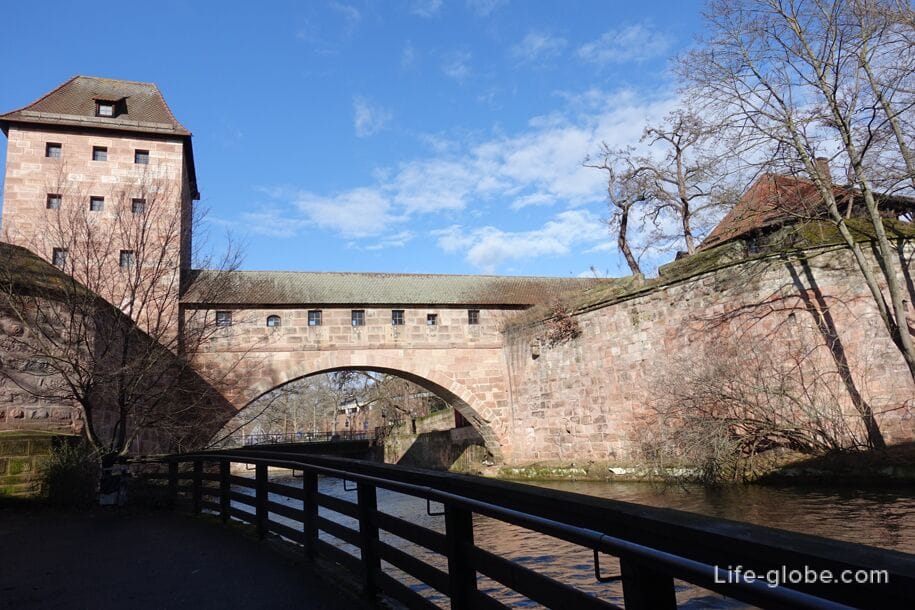
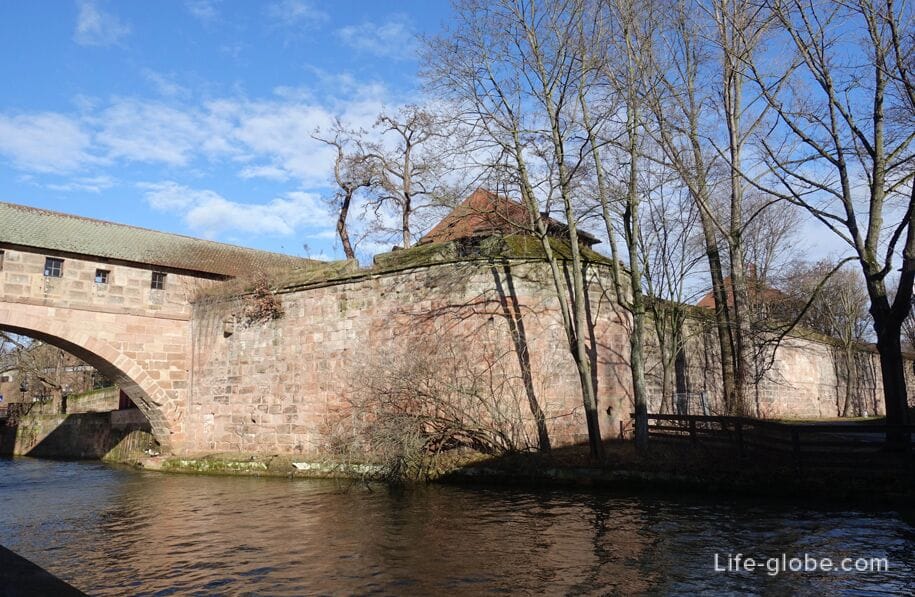
Behind the city wall (in the old town) on Pegnitz is the island of Schütt, which is the largest river island of Nuremberg.
The length of the island is 630 meters, and the maximum width is 120 meters.
Part of the island is a green park area.
Several bridges lead to the island from both sides of the old town across the Pegnitz River.

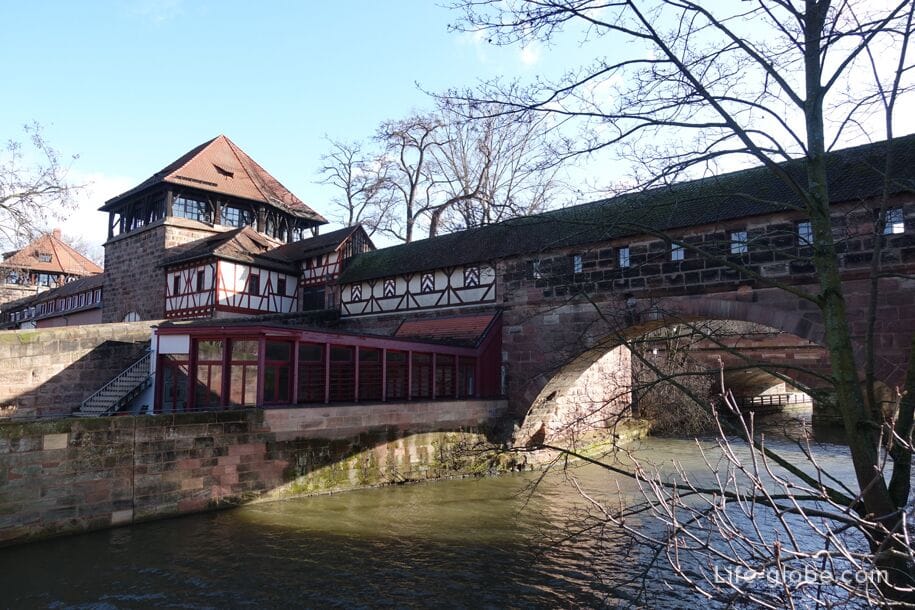
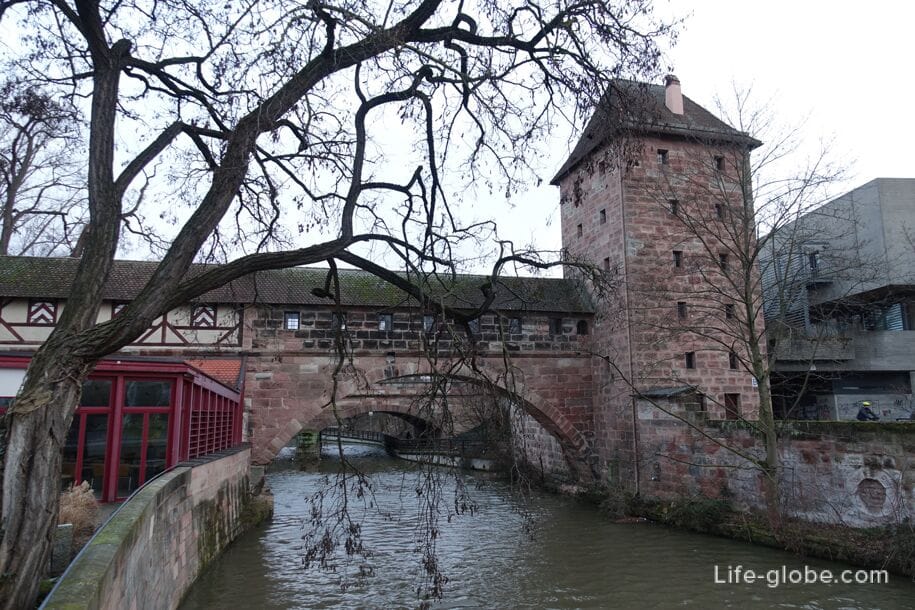

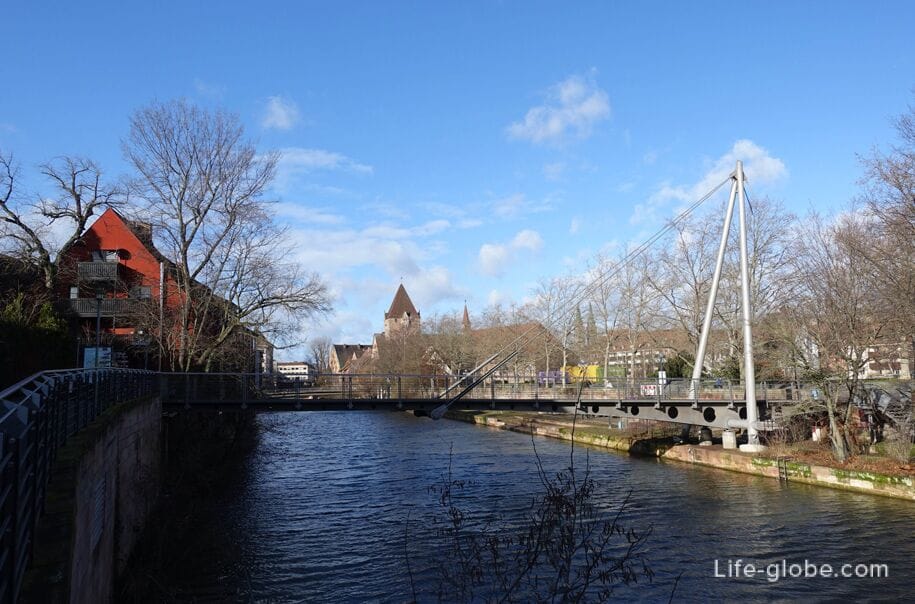

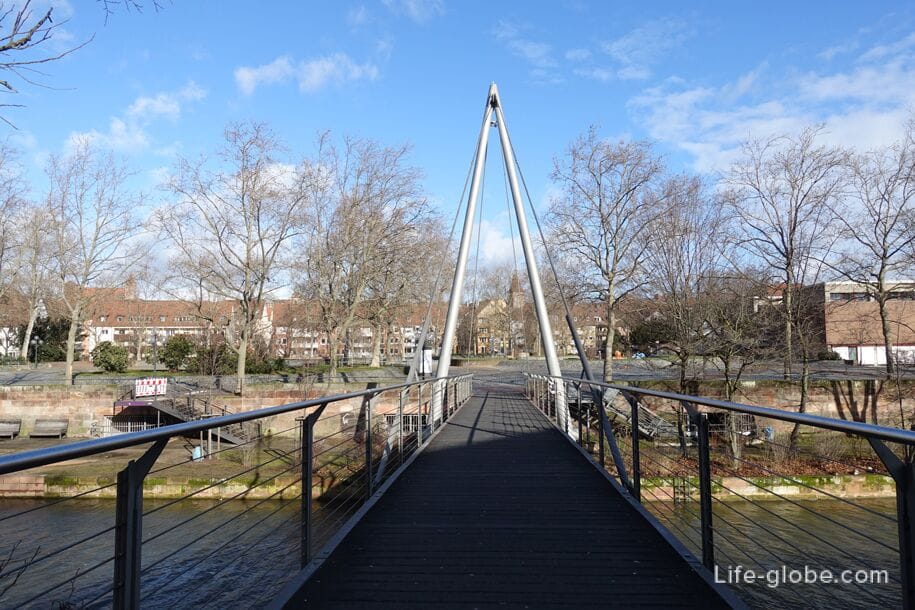
From the western side on the island of Schlütt is remarkableDebtors' Tower or Debt Tower (Schuldturm / Schuldturm).
The tower, presumably, was part of the so-called penultimate city fortifications, and was built in 1323 under the supervision of master builder Konrat Stromer.
After its construction, the tower was located within the city, and it was turned into a prison for debtors, and also used as so-called stupid houses for the mentally ill. More about the Debtors' Tower…
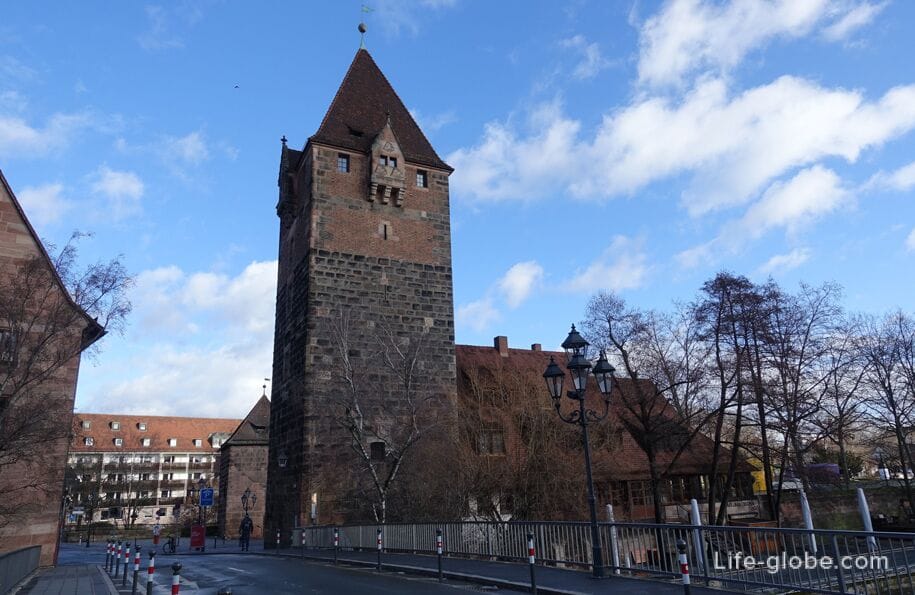
Near the debtors' tower, Schlütt Island is connected via Pegnitz to the sides of the old town by two bridges: the Hay Bridge (Heubrücke / Heibrücke) and the Hospital Bridge (Spitalbrücke / Spitalbrücke).
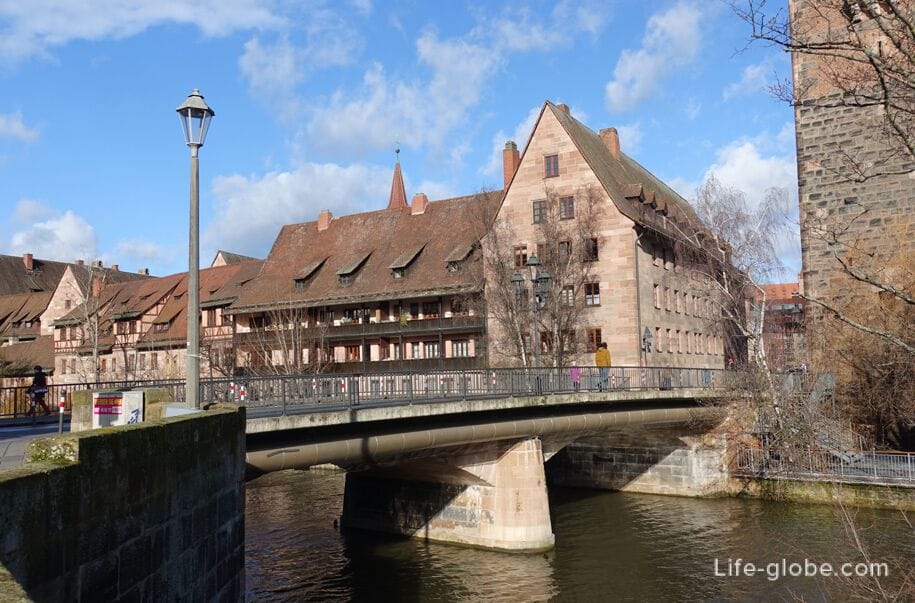
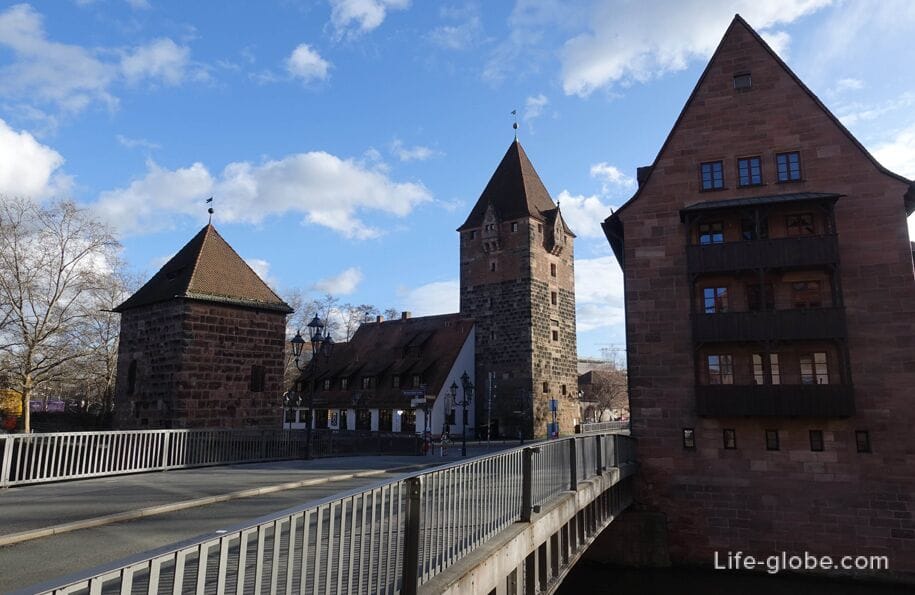
On the very nose of the Schlütt Island is the Hospital of the Holy Spirit (Heilig-Geist-Spital / Heilig-Geist-Spital) - the oldest and once the largest medical institution in Germany.
The hospital was built in 1332-1339 together with the church. The infirmary, as in many medieval cities, was dedicated to the Holy Spirit.
Today, the complex of the Holy Spirit Hospital is a historical and architectural "pearl" of Nuremberg, is included in the list of the main attractions and most tourist routes around the city.
The walls of the hospital now house a nursing home and a restaurant "Heilig-Geist-Spital Nürnberg", with tables in the courtyard.
Due to the fact that the wing of the hospital is located above the waters of the river, and its arches are lowered into the water, locals also call the hospital "Nuremberg Glasses".
Also noteworthy is the restored picturesque bay window with a pointed tower.
The best and most photographed view of the Gothic wing of the hospital opens from the Museum Bridge. More about the Hospital of the Holy Spirit...
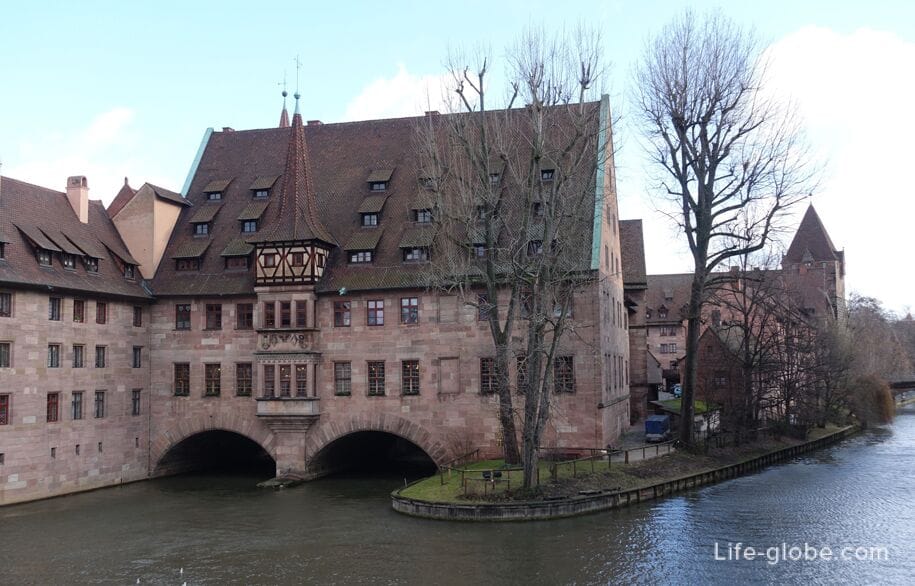
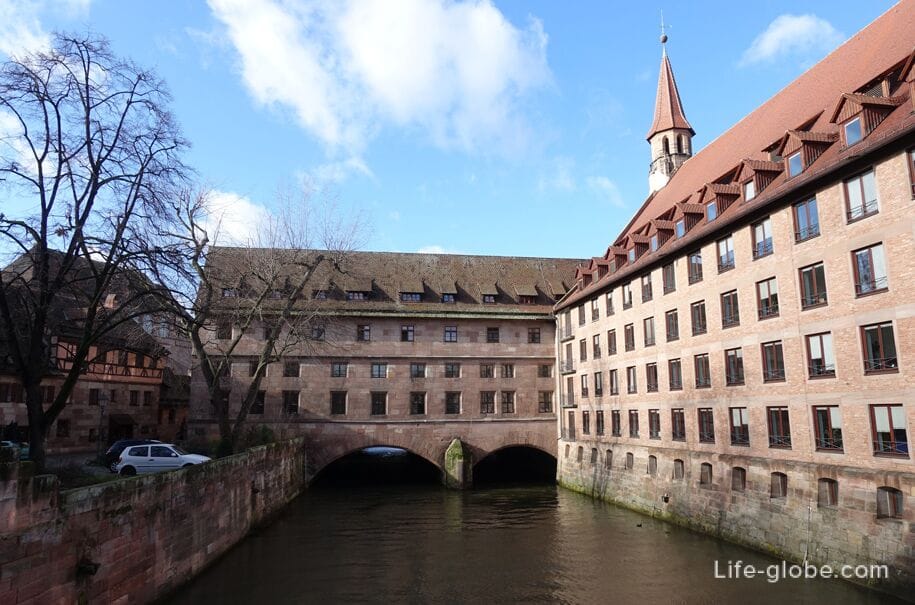
Then the Pegnitz River crosses The Museum Bridge (Museumsbrücke), which is the central and most visited in Nuremberg.
Initially, the site of today's bridge was believed to be the oldest bridge in Nuremberg across the Pegnitz River - a wooden bridge that was documented in the 13th century.
In 1700, the light saw a new stone bridge with two arched openings.
There are two Baroque-style pulpit structures with wrought-iron railings on the Museum Bridge: in honor of Emperor Leopold I and King Joseph I. In addition, the monuments are decorated with medallions, there are also coats of arms of the Holy Roman Empire, the Kingdoms of Hungary and Bohemia, Nuremberg and Nuremberg dignitaries (members of the city government). More about the Museum Bridge...
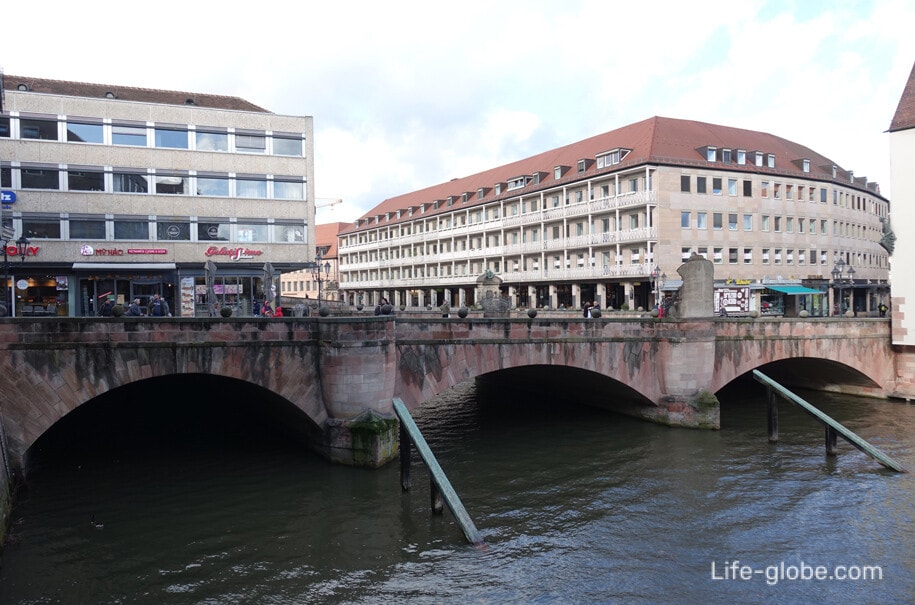
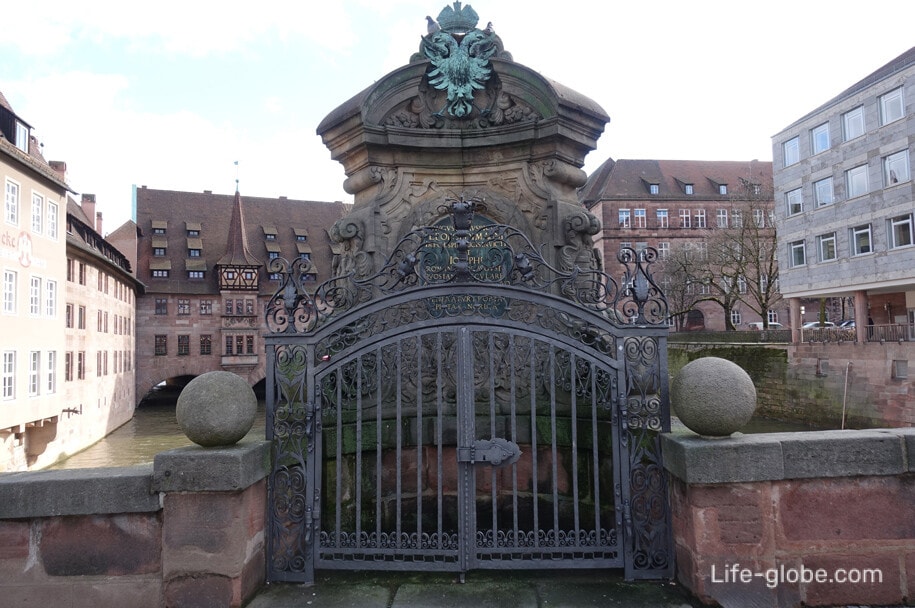
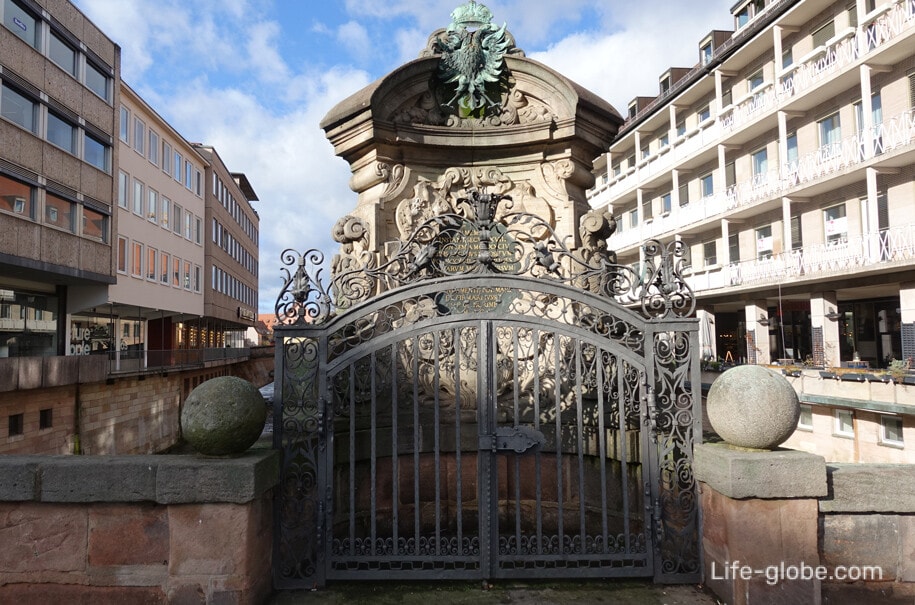
Then the river is crossed by a small stoneMeat bridge (Fleischbrücke / Fleischbrücke), which, because of its appearance, is also called a "Humpback Bridge".
The bridge lies at the narrowest point of the Pegnitz River.
It is assumed that the very first bridge at this place dates back to 1200, while the first documented mention of the Meat Bridge dates back to 1335.
The name of the bridge "Meat" comes from the Meat House/shop (Fleischhaus) located near the bridge, built in 1570-1571. Before that, there were wooden rows of a meat market near the bridge.
Today, the bridge is an example of Renaissance architecture in Nuremberg. More about the Meat Bridge...
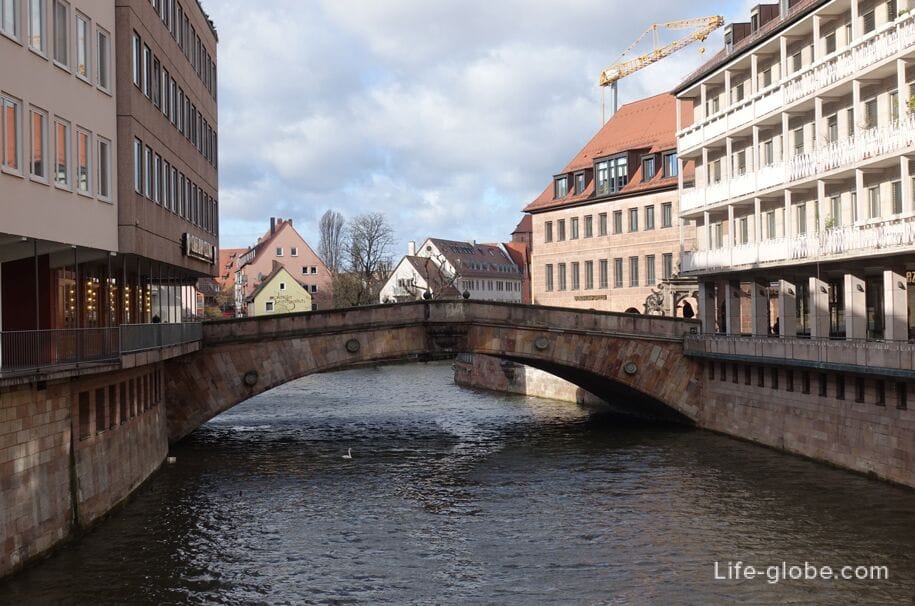
At the north-western end of the Meat Bridge is the portal of the "Bull" (Das Ochsenportal), which rests on one side on the former Meat House, and the other is adjacent to the Meat Bridge.
The portal is decorated with carvings and a stone figure of a reclining bull in the upper part. The portal was built in 1599 as the entrance gate to the Meat House building.
The portal was damaged during the Second World War. In 1950, the ox on the portal was replaced by a slightly modified copy.
The Latin inscription on the portal reads: "Omnia habent ortus suaque incrementa sed ecce quem cernis nunquam bos fuit hic vitulus", which translates roughly as: "All things have their origin (beginning) and growth, but look: the bull you see here has never been a calf."
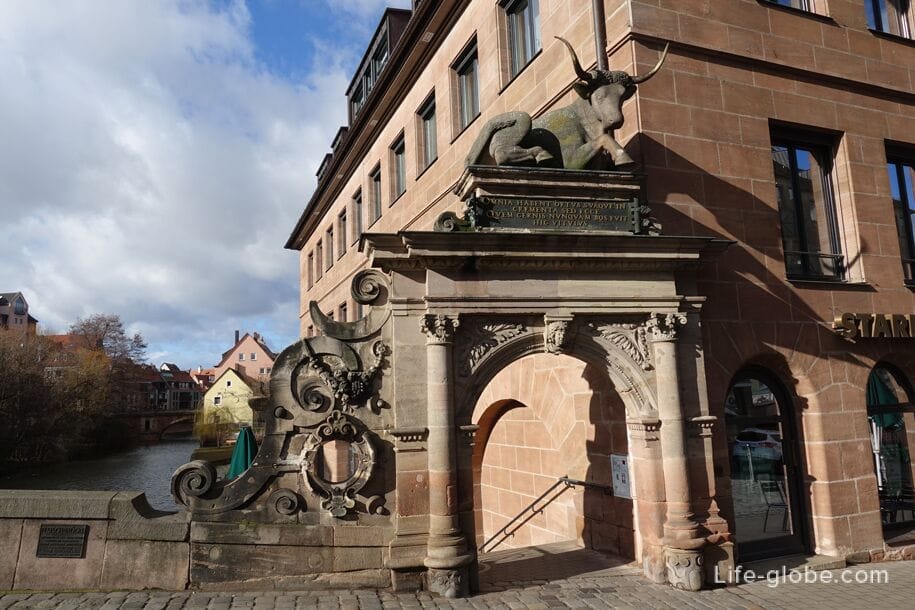
To the west on the Pegnitz River is the island of Love.
The market on the island existed in the Middle Ages. At that time, pigs were traded in the market, so the trading area on the island was called "Säumarkt". Mills have been operating on the island since 1440. In 1444, a butcher shop (butcher house) was built on the island.
Since the 16th century, residents of the northern side of the old town began to trade old and used things on the island. Therefore, in 1809-1810, the island was renamed the "Flea Market".
From 1895 to 1897, a full-fledged market complex was built, which replaced the old market shops.
Today, the island "Flea Market" is no longer a market. This is a very colorful, attractive and romantic place for walking and relaxing, where you can take a walk, lie on the green lawn (the eastern nose of the island), relax on benches or admire the Pegnitz River and the buildings on its banks from one of the terraces on the island. More about Love Island...


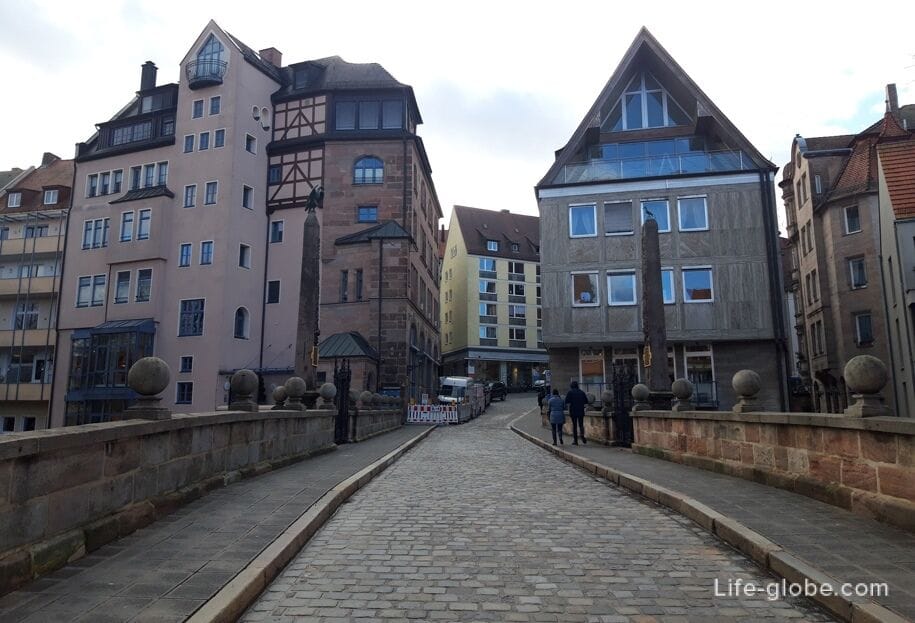
There are several bridges leading to the island of Love, the most famous of which is the Hangman's Bridge (Henkersteg), which was first built in 1457. In 1595, the bridge was washed away by a severe flood. After that, the bridge was restored.
The bridge got its name "Hangman's Bridge", which literally translates from German as "The Way to the Executioner", because of the nearby Hangman's Tower.
Today, the Hangman's Bridge is a wooden covered pedestrian bridge. It starts at the Hangman's Tower on Love Island and leads south to Unschlittplatz and "Fat house" (Unschlitthaus).


The bridge of the Executioner is one of the most recognizable and visited architectural ensembles of Nuremberg, which, in addition to the bridge of the Executioner, also includes: half-timbered former wine warehouse (Weinstadel), square water tower (Wasserturm), dwukrotny the connecting bridge (Pesnicky bridge / Pegnitzüberbrückung), round tower on the wall of the Executioner (Henkerturm) and a small house of the hangman (Executioner house). More about the ensemble...
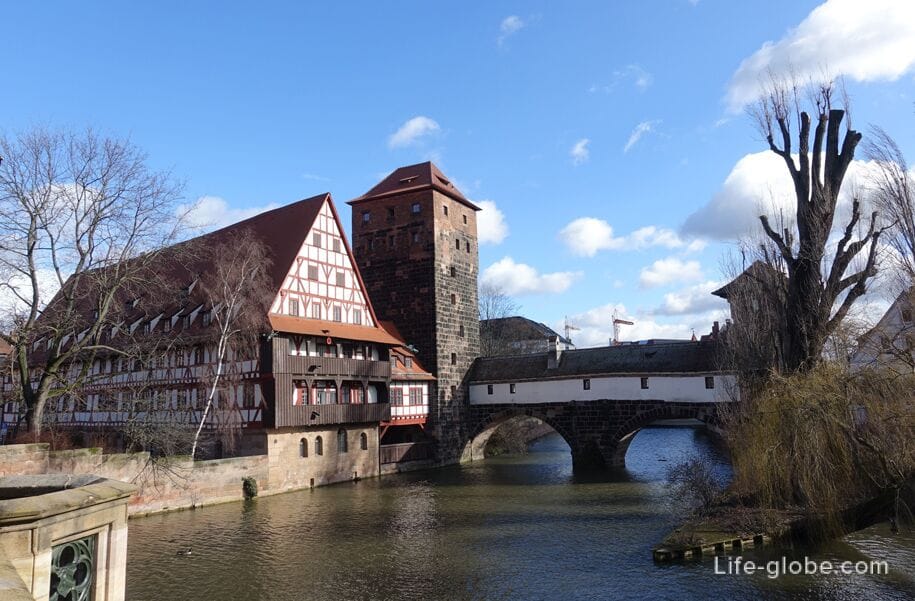
Next, the oldest stone bridge in the city - the Maximilian Bridge (Maxbrücke / Maxbrücke), which can also be known as the Max Bridge, crosses the Pegnitz River.
The bridge was built by Jacob Grimm, a master builder from Rothenburg, in 1457 and at that time was called the Stone Bridge.
Later, two cannon rondels were added in the middle of the bridge structure to protect the river.
In 1810, the bridge was renamed in honor of King Maximilian I Joseph of Bavaria and since then the port has been called "Maximilian Bridge". Learn more about the Maximilian Bridge...
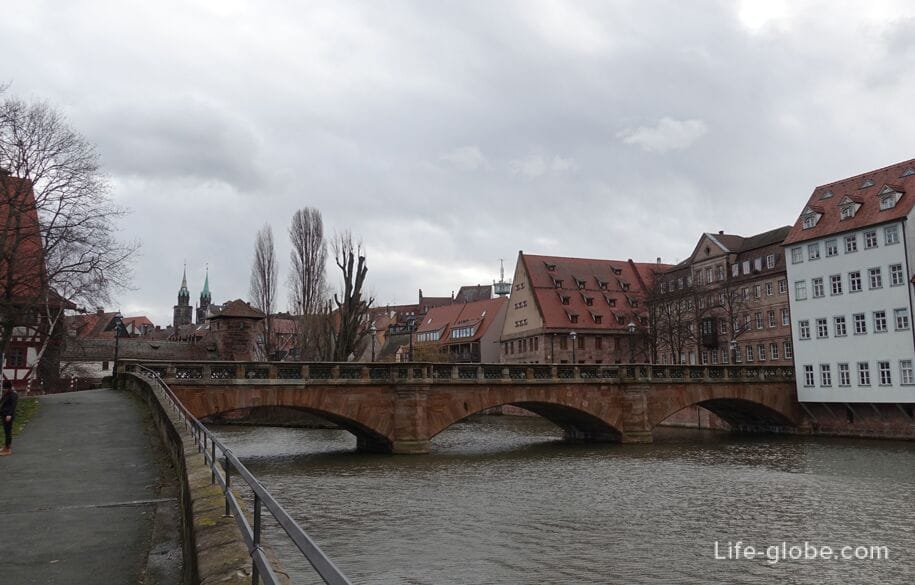
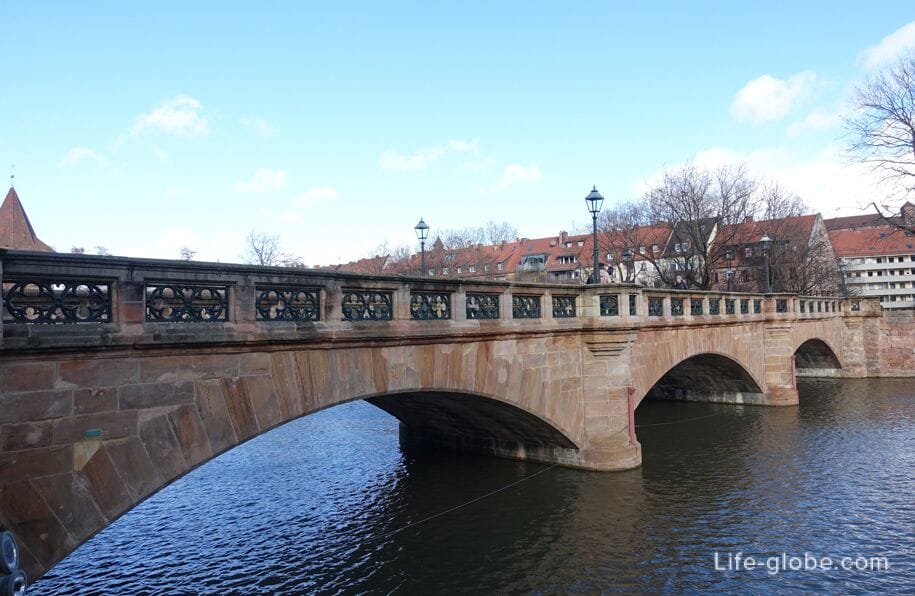
At the western end of the old city of Nuremberg, near the former city walls and fortifications, a Chain Bridge (Kettensteg) is thrown over the Pegnitz, which is also called the suspension bridge.
This narrow 68-meter pedestrian bridge is the oldest surviving iron suspension bridge in continental Europe.
The chain bridge was designed and built by engineer Konrad Georg Kuppler. The bridge was opened on December 30, 1824 and replaced a wooden walkway. During the history of the bridge has been subjected to repeated restoration and repair work.
Today, the Chain Bridge is a monument to the history of technology of the city and part of the tourist route "Historical Mile of Nuremberg" (Historische Meile Nürnberg).
The bridge has two spans, an iron main structure and a wooden base for movement. Learn more about the Chain Bridge and city fortifications...
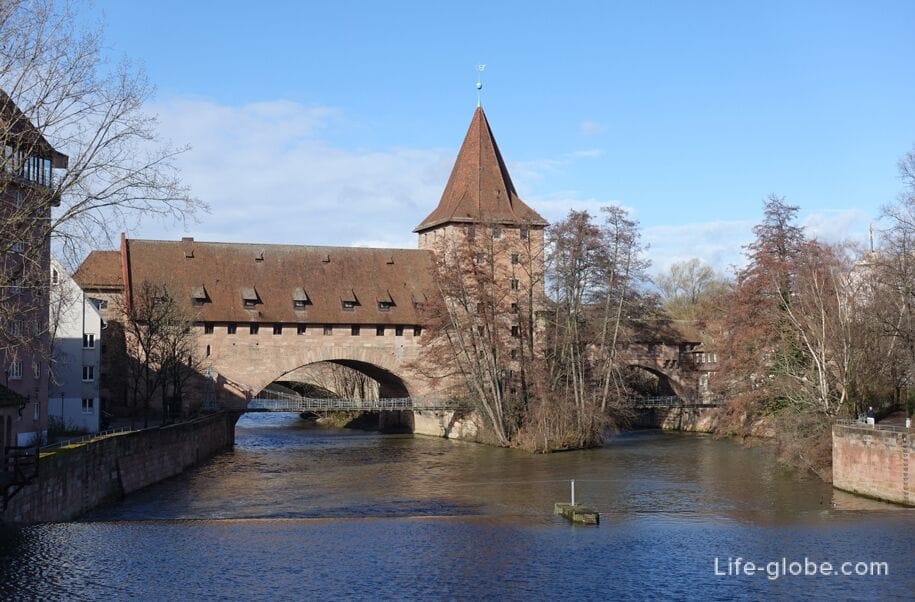
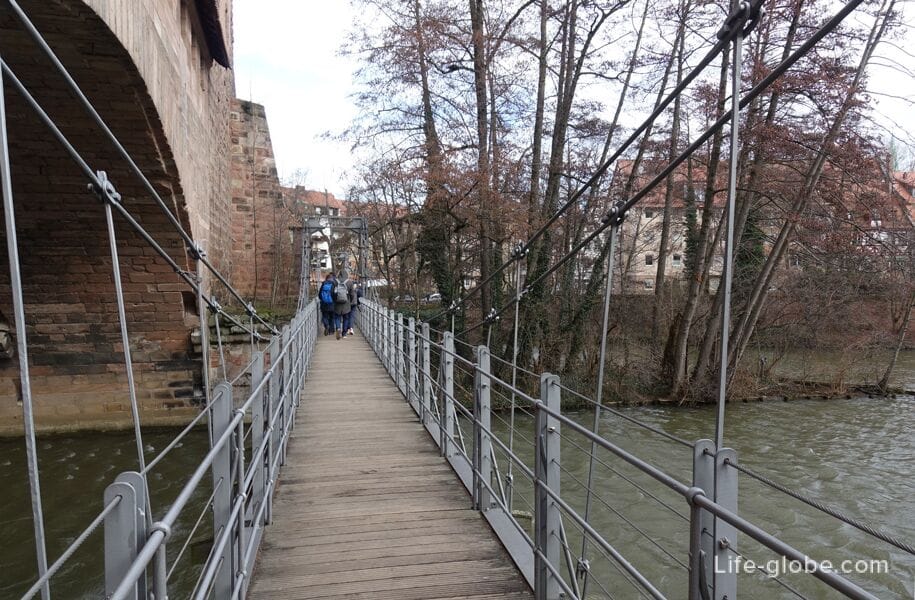
All accommodation facilities in Nuremberg, including in the city center and more remotely from it, can be viewed and booked here